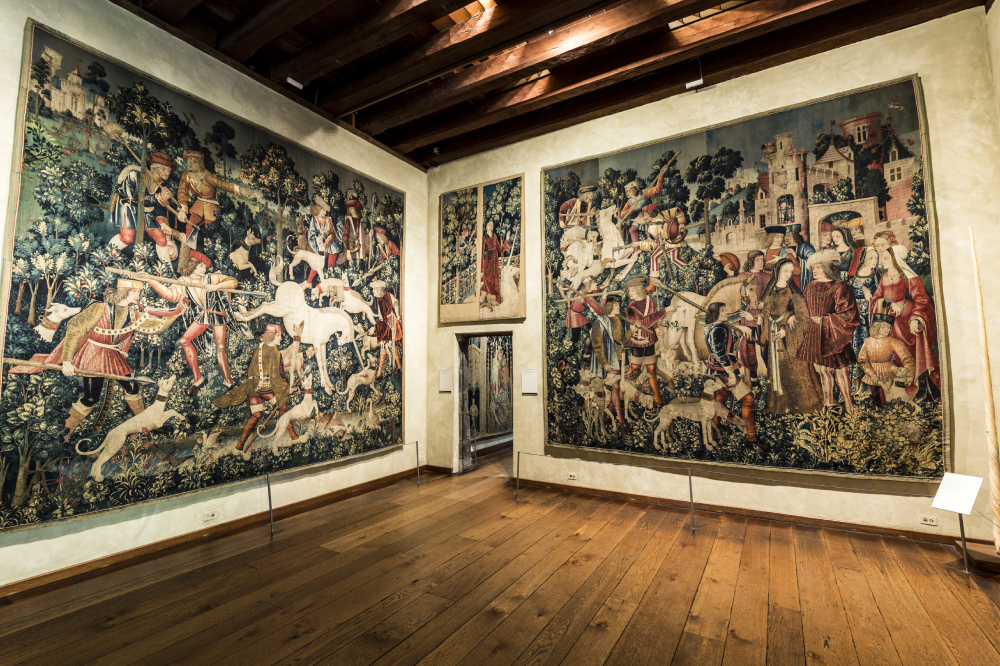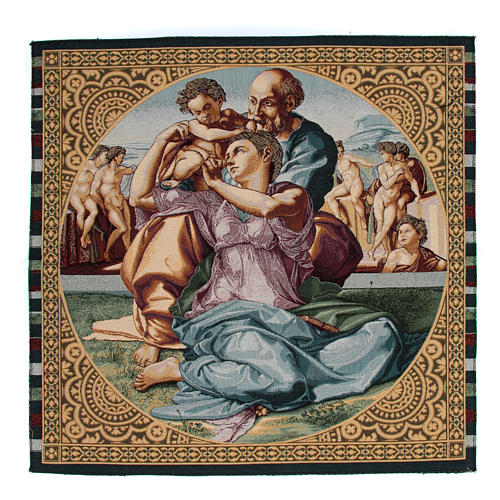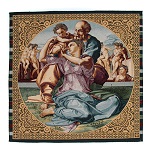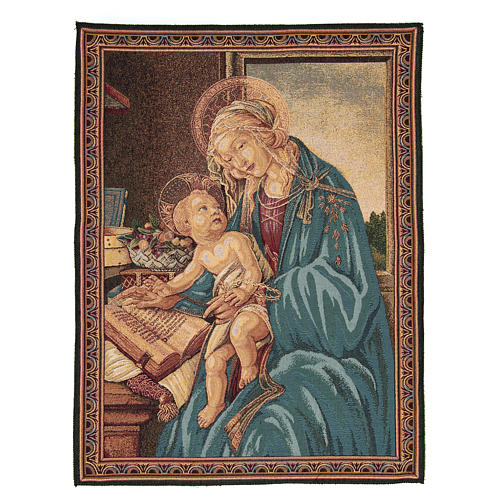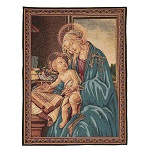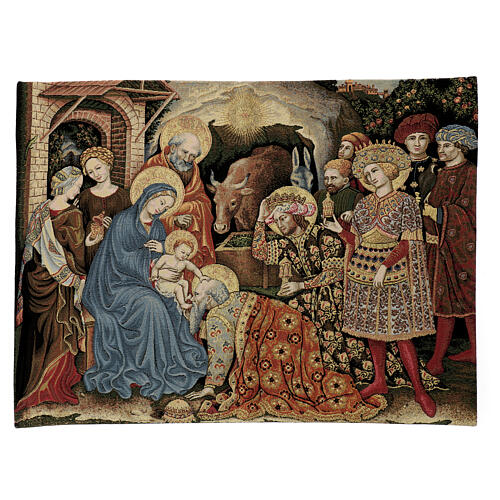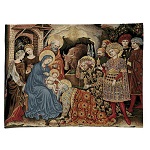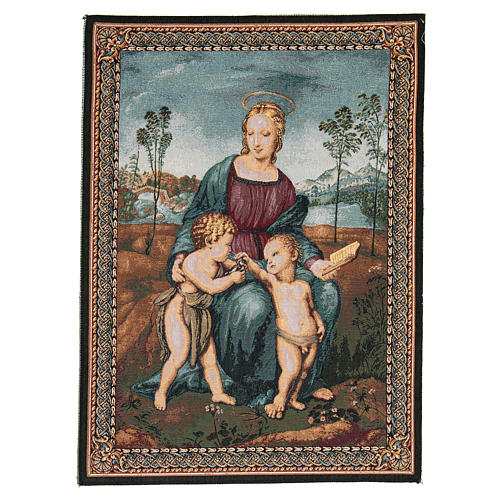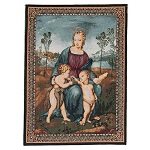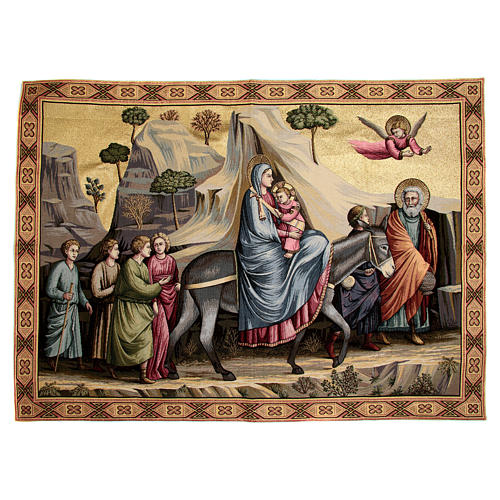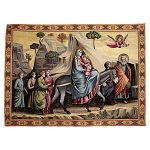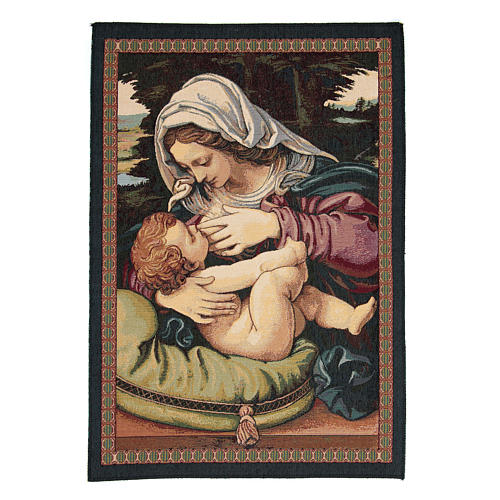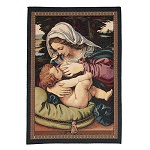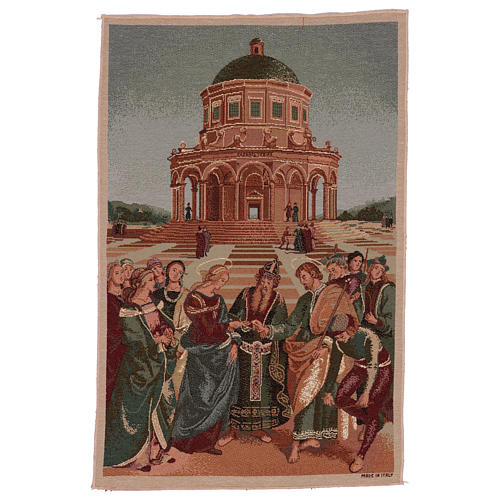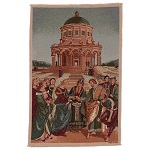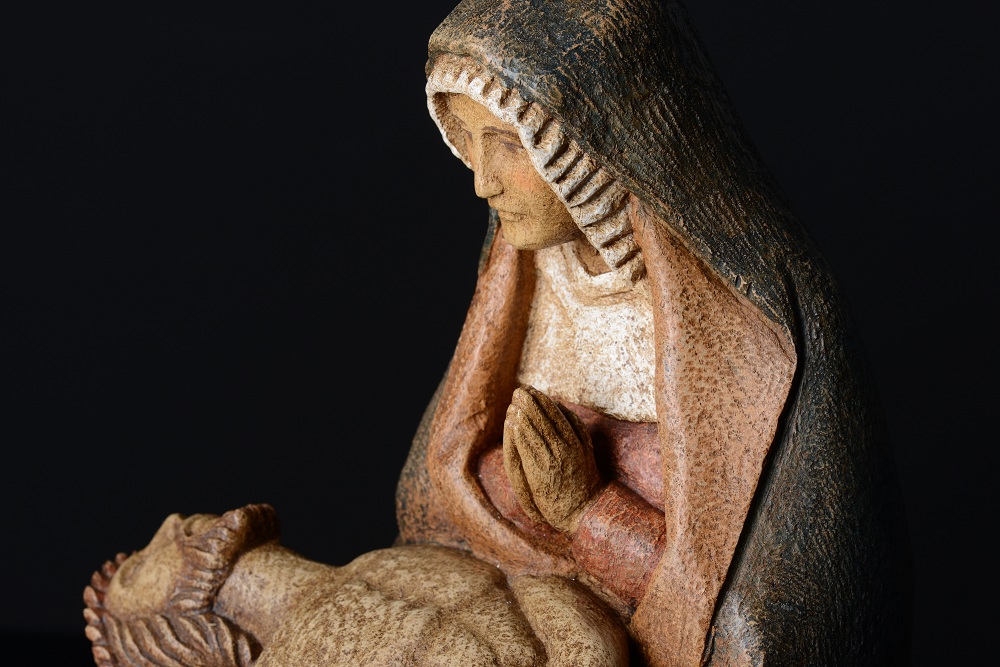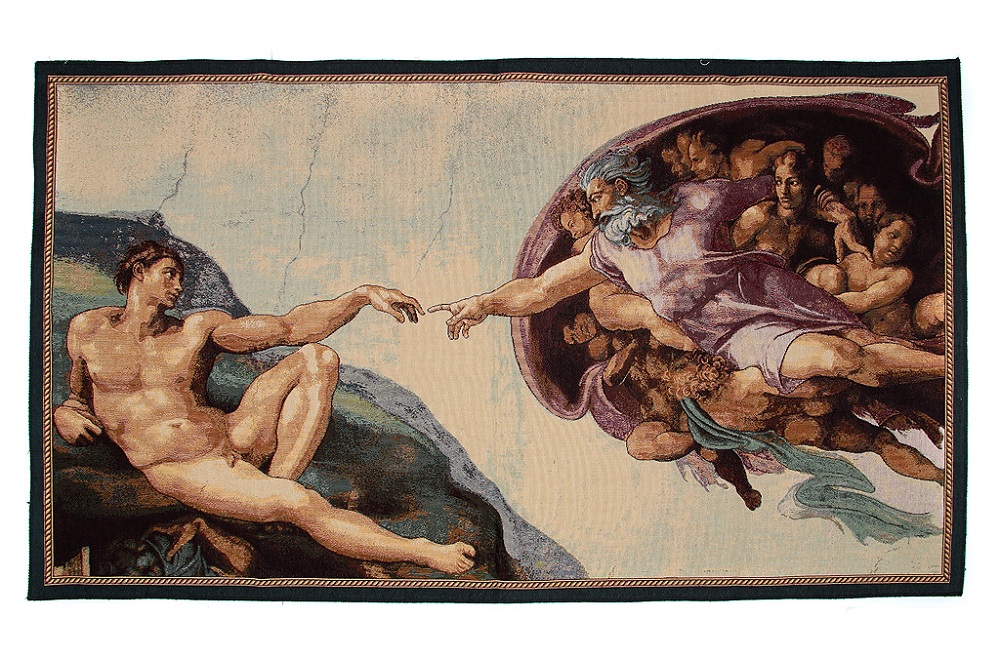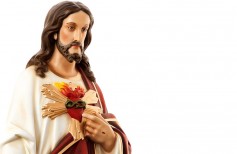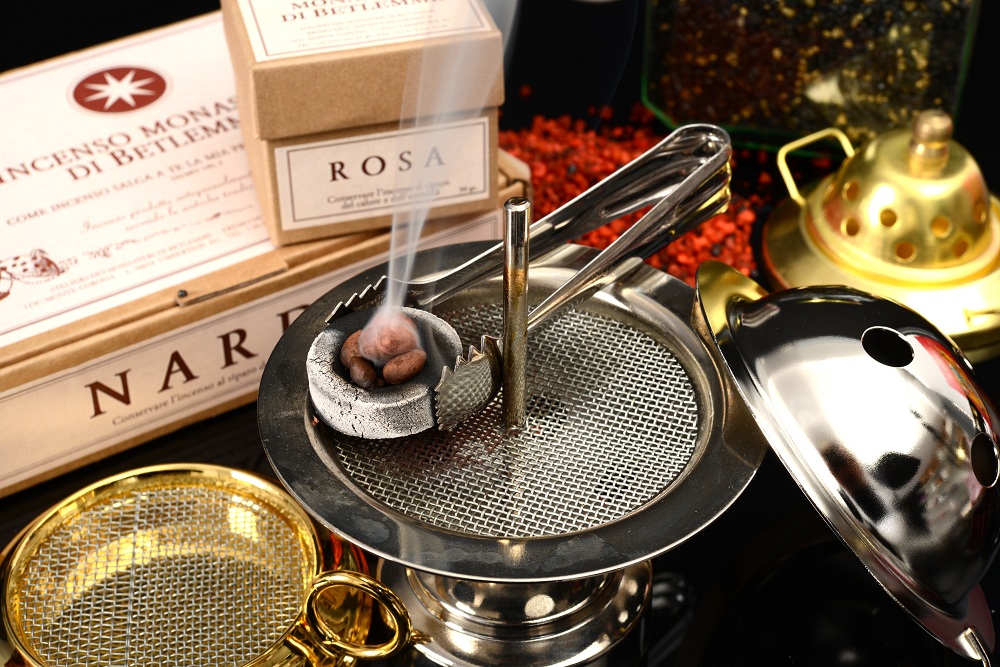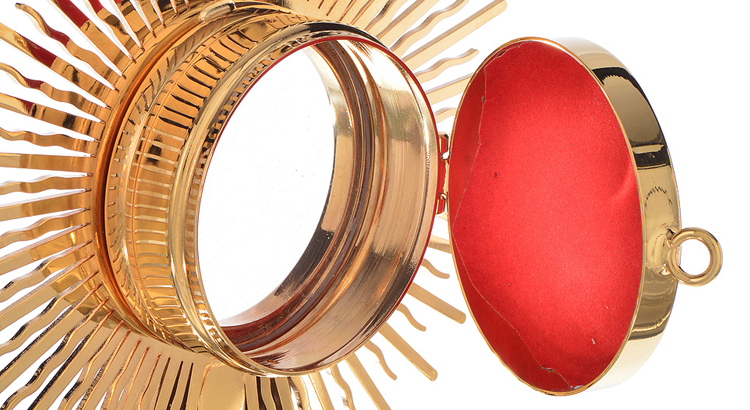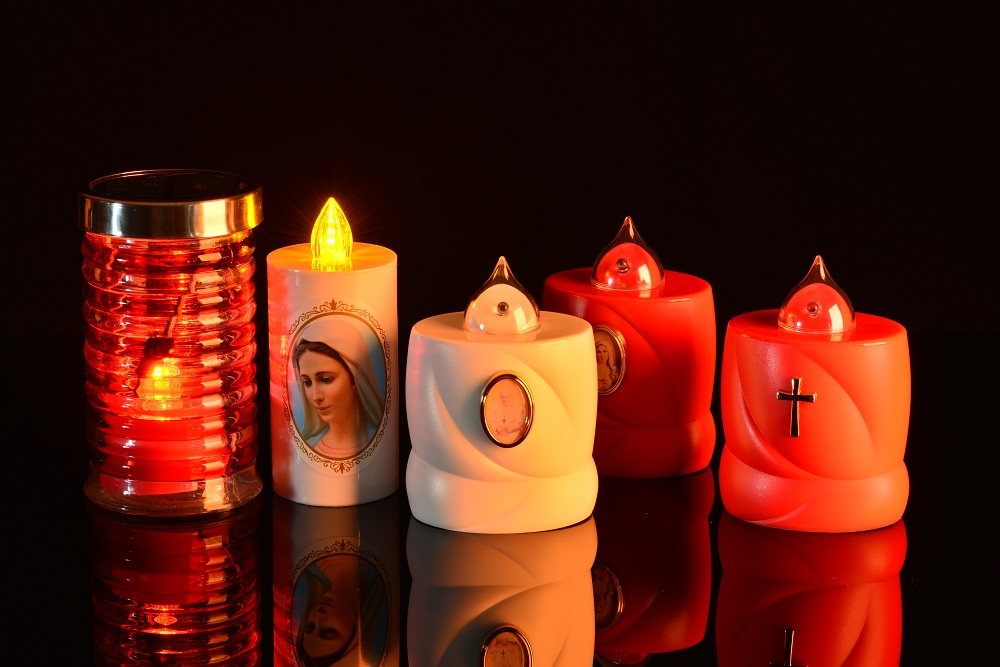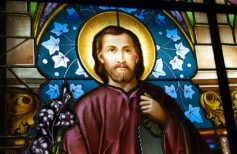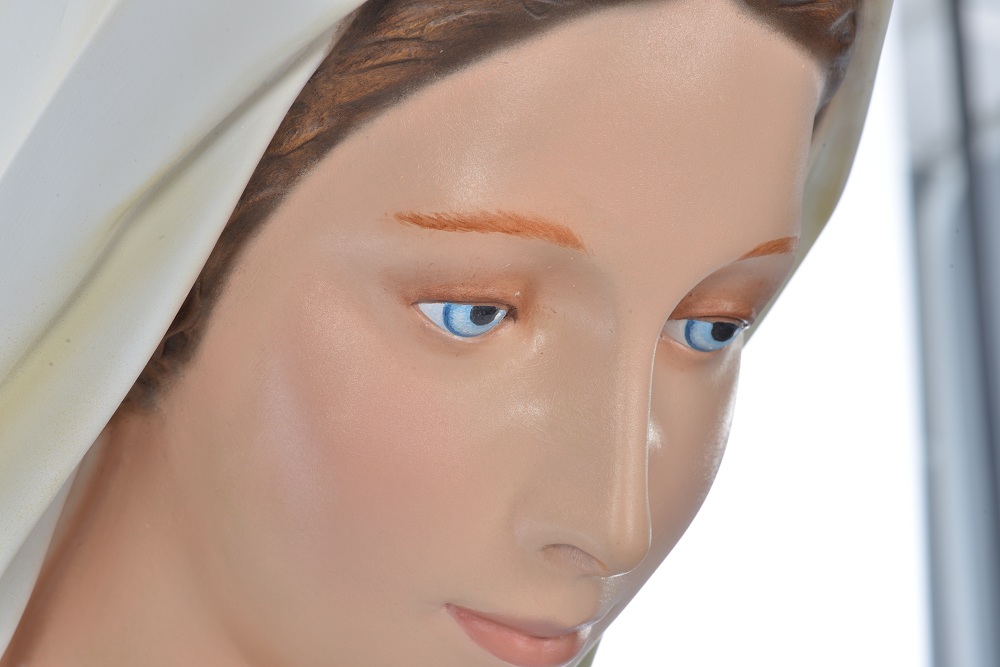Sacred tapestries have always been the protagonists of religious art. Preserved in churches all over the world, they are considered precious treasures to be exhibited only on great occasions. But some display them in their own homes.
Why talk about sacred tapestries today? The need to see depicted the image of God, or the sweetest face of the Virgin Mary, or triumphant or blessing Christ, is an indispensable component of Christian devotion. We must in no way read in this need a form of idolatry. Indeed, it is precisely devotion, especially popular devotion, that demands these representations, as manifestations of visible and tangible faith and love. Christianity, moreover, was based from the beginning on the need to visually render the symbols of faith, to allow the members of the first Christian sects to communicate with each other without incurring persecution.
We must also consider that in ancient times most of the men and women who attended the church were illiterate. Therefore, the representations of Jesus and Our Lady, as well as of Saints, became indispensable both to inspire faith and to ‘tell’ what in the Sacred Scriptures remained the prerogative of the few scholars.
We have focused on this topic in the past, talking about the sacred paintings to have in the house. Yes, because at the same time as the spreading of sacred images in the churches, the need to have one or more sacred representations in one’s own house, as a testimony of the faith of the inhabitants of the house itself, of their belonging to God, was soon manifested.

5 must-have sacred images and pictures
Since the origins of Christianity, people felt the need to reproduce the object of their devotion, or something that recalled…
What we have written about sacred paintings also applies to sacred tapestries, especially if we consider that the art of tapestries is very ancient and has always been widespread in every part of the world. It is no coincidence that many famous painters and artists have lent their art to the creation of sacred tapestries, drawing the bases on which the artisans would then lay their own warp of coloured threads.
Beginning in the 14th century and throughout the Renaissance, castles, houses and places of worship were enriched with countless tapestries. In addition to representing objects of art and devotion, they also fulfilled the difficult task of thermally insulating environments, often too large and difficult to heat.
How a tapestry is made
The name ‘tapestry’ derives from the name of the French city of Arras, one of the first centres of this ancient and fascinating art. In this city, during the Middle Ages, artists and craftsmen of all kinds were gathered, from painters to weavers, from carpenters to jewellers, because the art of sacred tapestries was complex and needed many skills.
The tapestry is a piece of fabric woven by hand on a frame, usually made of wood, starting from cardboard, or a preparatory drawing, made by a painter.
Like each fabric, a tapestry is composed of a weft, the set of horizontally arranged threads that make up the visible design of the tapestry, and a warp, the threads stretched vertically on the frame that supports the weft.
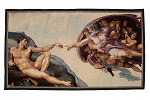
Tapestry: What is it and how it’s made
Tapestry is an extremely ancient art form which has been present in all cultures in the world for millennia…
The warp threads are organised into two series that are divided into openings called passages, or warp mouths. Here the plot is passed through which, unlike what happens with a normal fabric, is not spread with a single shuttle, or spool of wire, but with many different shuttles, one for each colour. This required in the past that the craftsmen work on small sections of tapestry from time to time, passing and going over the weft through the warp, to build the various elements of the design.
The threads of the weft are then crushed with a comb so that the warp is completely hidden.
In ancient times it took years to make large craft tapestries. They were real works of art, which reached care in the details and sharpness in the surprising colours. Being designed to cover the walls, the old tapestries were usually large.
In the 17th century, the tapestries painted directly on fabric, usually, silk and linen, began to spread and real oil paintings on cloth hung on the walls, which became an integral part of the furnishings of many castles and palaces.
The Jacquard frame
In the nineteenth century, the textile industry was revolutionised by a series of innovations. Mechanical frames powered by steam, hydraulic frames and flying spools appeared, intended to change the working methods of weavers around the world.
Joseph-Marie Jacquard, a French inventor who lived under Napoleon, invented the Jacquard Frame. In practice, it is a frame that uses perforated cards that automatically guide the weaving of the weft on the warp and consequently the formation of the design on the fabric. This allows the weaver to work alone, without the need for an assistant to intervene from time to time to create the warp holes to follow the drawing on the preparatory cardboard.
The Jacquard frame was composed of a structure that was to be applied on a normal frame, and which included a ribbon formed by perforated cartons to reproduce the design that was wanted to be made, a chain that advanced the perforated panels, a series of cylindrical counterweights connected to the meshes of the licks, or the components of the frame that divided the warp threads. The counterweights were connected to the meshes of the licks, to which the various warp threads were secured. When the counterweights found a hole in the pre-drilled cardboard, they ‘dropped’ the thread creating a warp hole in which the weaver could insert the weft thread to create the desired design. The weaver then proceeded by combing the plot and following the next ‘fall’.
As expected, this invention was welcomed with great enthusiasm but also with fear, because many weavers saw it as a threat to their work. Even in France in 1831 a revolt broke out among the silk weavers of Lyon (the Canuts), but this did not prevent the Jacquard loom from spreading rapidly throughout Europe.
In the past, the Jacquard frame was still a manual frame, in which the movements of the cartons were determined by the weaver using levers and knobs. The most complex fabrics were spread on frames that allowed the processing of more warps with the help of pedals.
Today Jacquard frames are automated in all their parts, from mechanical movements to the progression of computer-managed drawing schemes.
Our religious tapestries
In our online shop, you will find many tapestries suitable for hanging in your home. These are mainly reproductions of famous tapestries, or tapestry works obtained from famous works of art of the greatest masters of the past.
Our religious tapestries are of different sizes, suitable for every wall and every room. They are all produced in Italy and made in a frame with different types of material, from polyester to Lurex, to Viscose. Some of these tapestries have been embellished with particularly fine yarns and refined workmanship.
As for the subjects, there is only the embarrassment of choice. There are sacred tapestries representing Our Lady, Jesus, the Saints and the Pope. Others, as we mentioned, are reproductions of significant scenes of the Sacred Scriptures, such as the Last Supper, the Adoration of the Magi or the Annunciation.
Here are some sacred tapestries that reproduce famous works of art.

